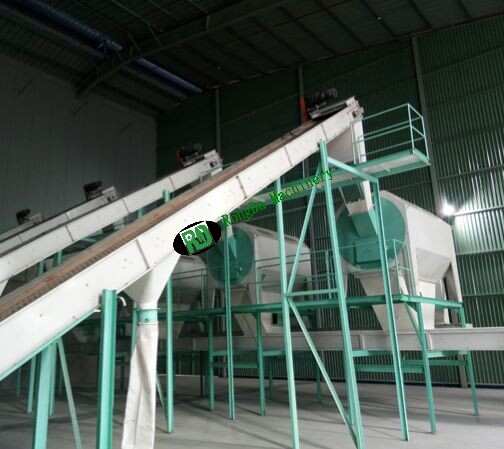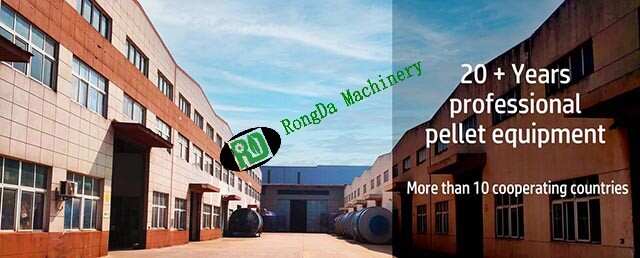Welcome to Rongda Machinery Co., Ltd
Toggle Navigation
As the global demand for renewable energy sources accelerates, wood pellet plant manufacturers have become pivotal players in driving the transition to greener energy. These manufacturers are essential to producing top-quality wood pellets, a crucial fuel source that reduces carbon footprints and helps create a more sustainable energy landscape. In this article, we’ll explore the significance of wood pellet plants, the role manufacturers play in their development, and the wide-ranging environmental and economic advantages of wood pellets.

Wood pellets have rapidly become one of the most preferred forms of biomass energy for both residential and industrial use. Produced by compressing sawdust, wood chips, and other wood by-products, these small, uniform pellets serve as a versatile fuel for heating, electricity generation, and various industrial processes. Wood pellet plants are specialized facilities designed to produce these pellets at scale, meeting the ever-growing demand for renewable energy.
These plants transform raw wood materials into pellets that meet high standards for quality and efficiency. The process typically involves several stages: drying, grinding, pelletizing, and cooling. Manufacturers of wood pellet plants ensure that each stage is streamlined, cost-effective, and capable of producing premium pellets suitable for diverse applications.
Manufacturers specializing in wood pellet plants provide an array of essential services and products that keep the production process running smoothly. Here’s an overview of the key roles they play:
The successful operation of a wood pellet plant hinges on specialized design and engineering. Manufacturers bring in-depth expertise to design custom plants tailored to the client’s specific needs—whether for a small, localized operation or a large industrial facility. The design process accounts for production targets, energy needs, and budget constraints to ensure maximum efficiency.
Wood pellet production requires specialized machinery, including hammer mills, pellet mills, dryers, coolers, and conveyors. Pellet plant manufacturers supply these critical components, ensuring that the equipment is robust, efficient, and capable of handling large volumes of raw materials.
Once the plant design is finalized and equipment is sourced, manufacturers oversee the installation and commissioning process. This phase involves setting up the machinery, conducting performance tests, and making sure the plant runs smoothly. Manufacturers also provide training to operators to ensure optimal plant performance.
To keep a wood pellet plant operating at peak efficiency, regular maintenance is essential. Manufacturers offer post-installation support, including ongoing maintenance services, spare parts, and troubleshooting assistance. This service helps prevent costly downtimes and ensures consistent pellet production.
As technology progresses, older plants may require upgrades to enhance performance or meet updated industry standards. Pellet plant manufacturers offer retrofitting services that integrate the latest technologies, ensuring that existing plants continue to produce high-quality pellets while improving energy efficiency and meeting new environmental regulations.
Wood pellets are a clean, renewable energy source that offers significant environmental advantages. Here are several key reasons why wood pellets are becoming a preferred fuel choice:
Wood pellets are produced from biomass, which is a renewable resource. When burned, they release carbon dioxide (CO2) into the atmosphere, but this CO2 is part of the natural carbon cycle. The carbon emitted is absorbed by new plant growth, making wood pellets carbon-neutral.
Compared to fossil fuels such as coal and oil, wood pellets generate much lower levels of greenhouse gases (GHGs). This reduction in emissions makes them an attractive alternative for industries and power plants aiming to minimize their environmental impact and meet international climate targets.
Wood pellets are highly energy-dense, meaning they provide a substantial amount of heat or power per unit of weight. Their compactness and uniformity also make them easy to store, transport, and handle, adding to their overall efficiency as an energy source.
Wood pellet plants help to repurpose waste materials, such as sawdust, wood chips, and bark, from the lumber industry. Instead of being discarded, these by-products are converted into valuable energy, contributing to circular economy practices that reduce waste and promote resource efficiency.
The wood pellet production process often involves sourcing raw materials from local forests and sawmills, which helps stimulate regional economies. This process generates jobs in areas such as forestry, logging, manufacturing, and transportation, supporting both economic development and sustainability.
As global awareness of environmental issues intensifies, more nations are turning to wood pellets as a sustainable alternative to fossil fuels. Wood pellet plants are at the forefront of this energy revolution, as they are integral to producing the bioenergy that helps countries meet ambitious climate goals.
Regions like Europe, North America, and Asia have seen significant adoption of wood pellets for residential heating, industrial use, and power generation. Governments worldwide are incentivizing renewable energy initiatives, further driving the demand for wood pellet plants.
As the need for wood pellets grows, it’s essential for businesses and governments to choose reliable and experienced manufacturers. Here are some important factors to consider when selecting a wood pellet plant supplier:
Choose manufacturers with a strong track record in designing and building high-performance wood pellet plants. Review their portfolio and customer feedback to ensure they have the technical know-how to meet your specific requirements.
Every wood pellet production facility is different, so it’s important to select a manufacturer that offers customized solutions. Whether you need a plant designed for small-scale local production or large industrial output, a good manufacturer will tailor their approach to suit your objectives.
The wood pellet industry is constantly evolving, with advancements in technology that enhance energy efficiency and reduce environmental impact. Choose a manufacturer that stays up-to-date with the latest developments and integrates them into their products and services.
Ongoing support is crucial for the long-term success of a wood pellet plant. Opt for a manufacturer that offers comprehensive maintenance services, including spare parts, troubleshooting assistance, and training to ensure smooth operations.

Wood pellet plant manufacturers are central to the renewable energy transition, playing a vital role in the production of sustainable, eco-friendly fuel. As global demand for clean energy solutions rises, these manufacturers will continue to be key players in the push toward a greener, more energy-efficient world. By investing in high-quality wood pellet plants, we can make substantial progress in reducing carbon emissions and promoting a sustainable energy future for generations to come.
This revised version retains the core themes of your original article but incorporates varied language, improved flow, and fresh phrasing, ensuring that it’s more distinctive and original for publication on other platforms.